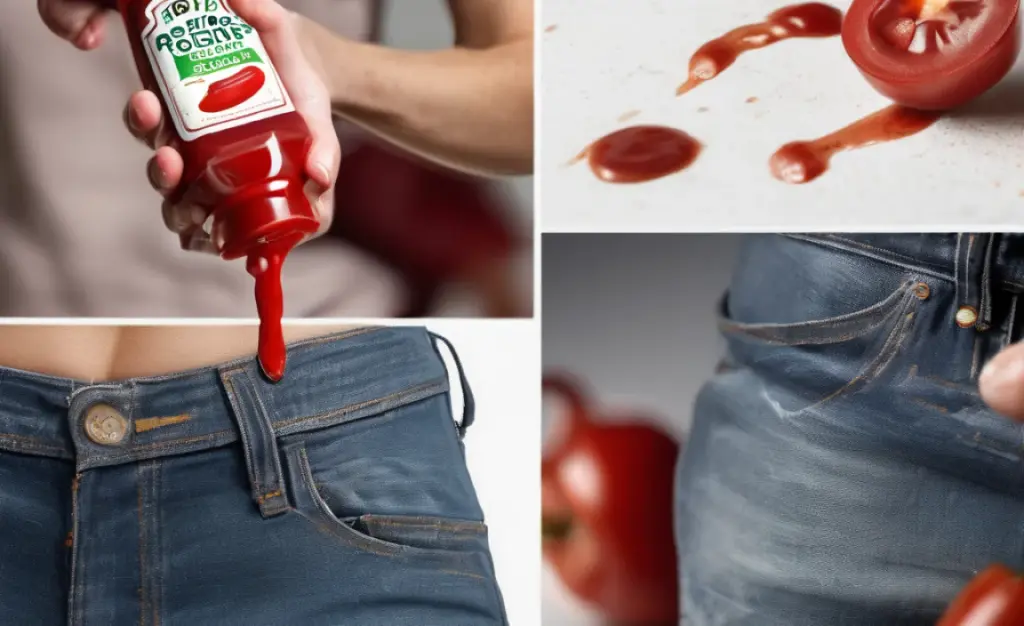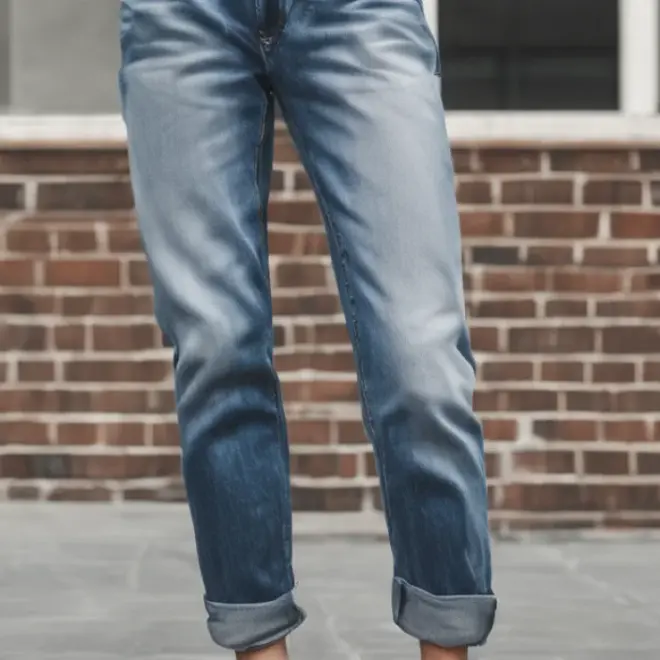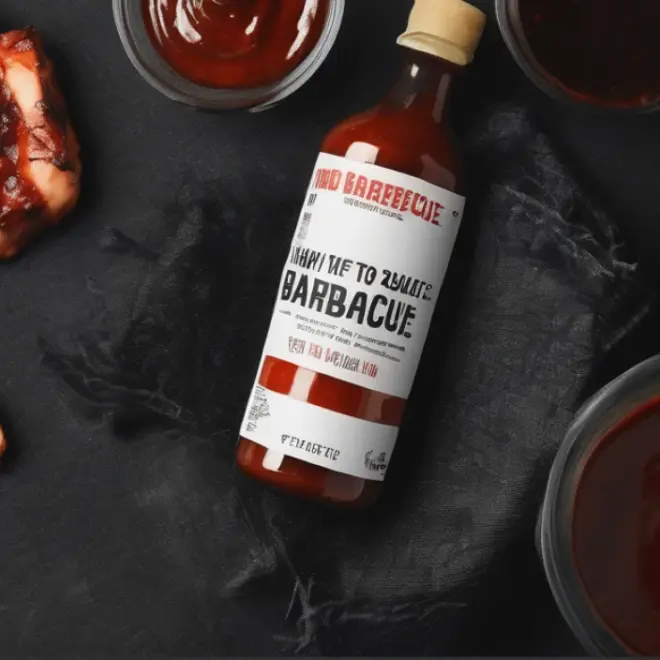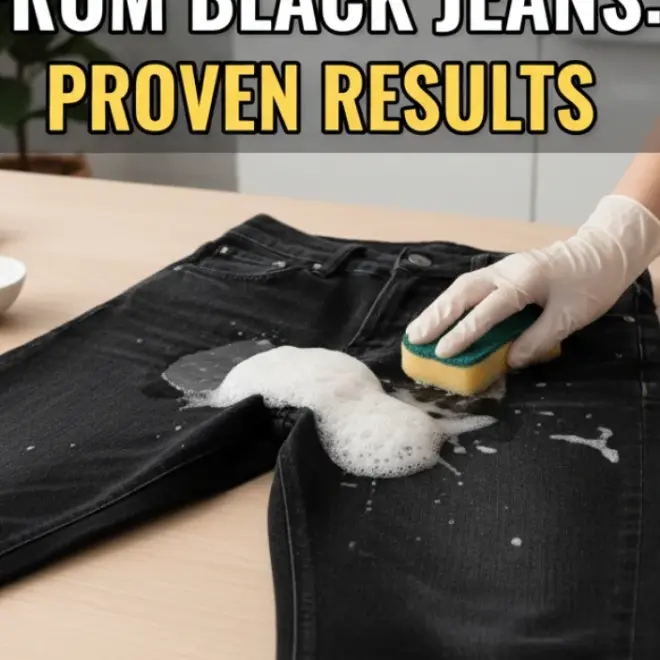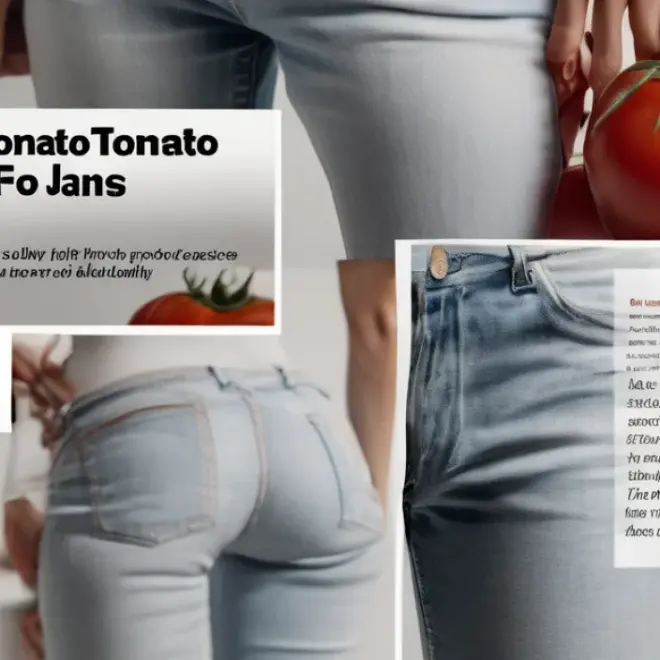Quick Summary:
Successfully remove ketchup stains from your jeans without a trace by acting fast. Gently scrape excess, blot with a cold-water-dampened cloth, and treat with a mild detergent or stain remover before washing as usual. This guide offers simple, proven steps for stain-free results.
Dealing with a ketchup stain on your favorite pair of jeans can feel like a fashion emergency. That bright red sauce seems to have a mind of its own, clinging stubbornly to denim. But don’t worry, a ketchup mishap doesn’t have to mean a permanent mark. With a few common household items and a bit of know-how, you can banish those unsightly spots and keep your jeans looking as good as new. This guide will walk you through proven, easy-to-follow steps to tackle ketchup stains effectively, ensuring you achieve stain-free results with confidence.
Why Ketchup Stains Can Be Tricky (And How to Beat Them)
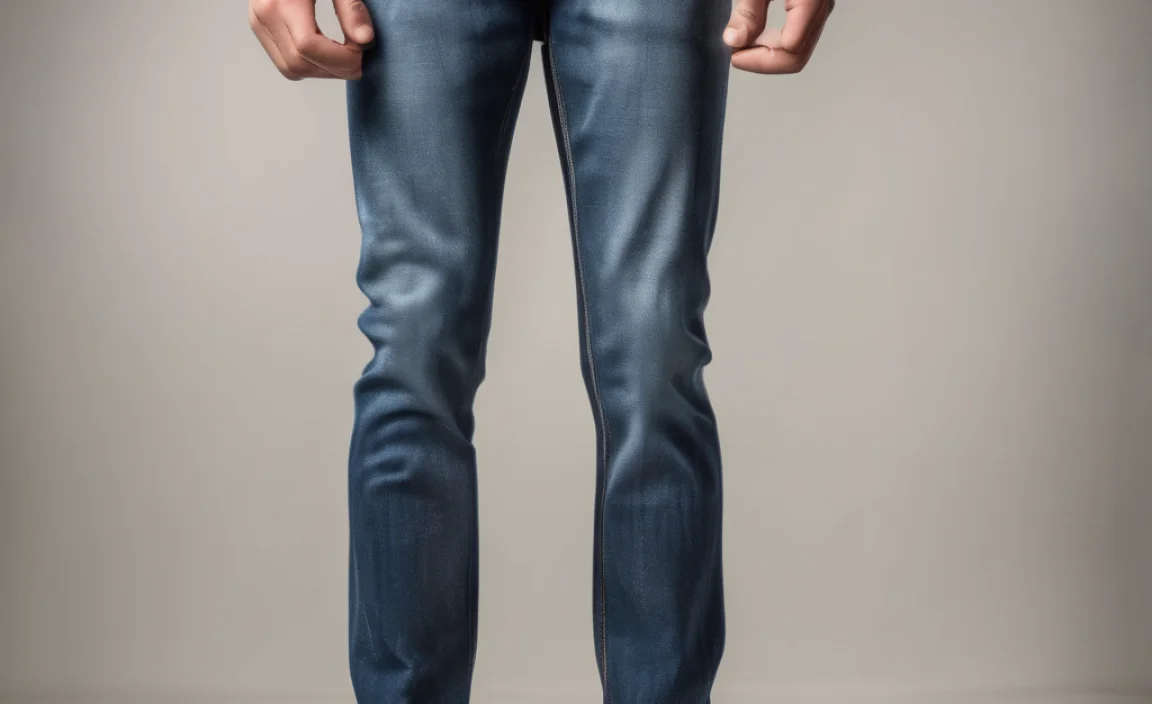
Ketchup is a common culprit for fabric stains due to its ingredients: tomato paste, vinegar, sugar, and spices. The pigments in tomatoes can dye fibers, while the acidity can sometimes set the stain if not treated properly. The key to successfully removing ketchup from jeans lies in prompt action and using the right techniques. The longer a stain sits, the harder it becomes to remove completely. Fortunately, denim is a durable fabric, making it relatively forgiving when it comes to stain treatment, provided you avoid harsh methods that could damage the material.
Essential Tools for Ketchup Stain Removal
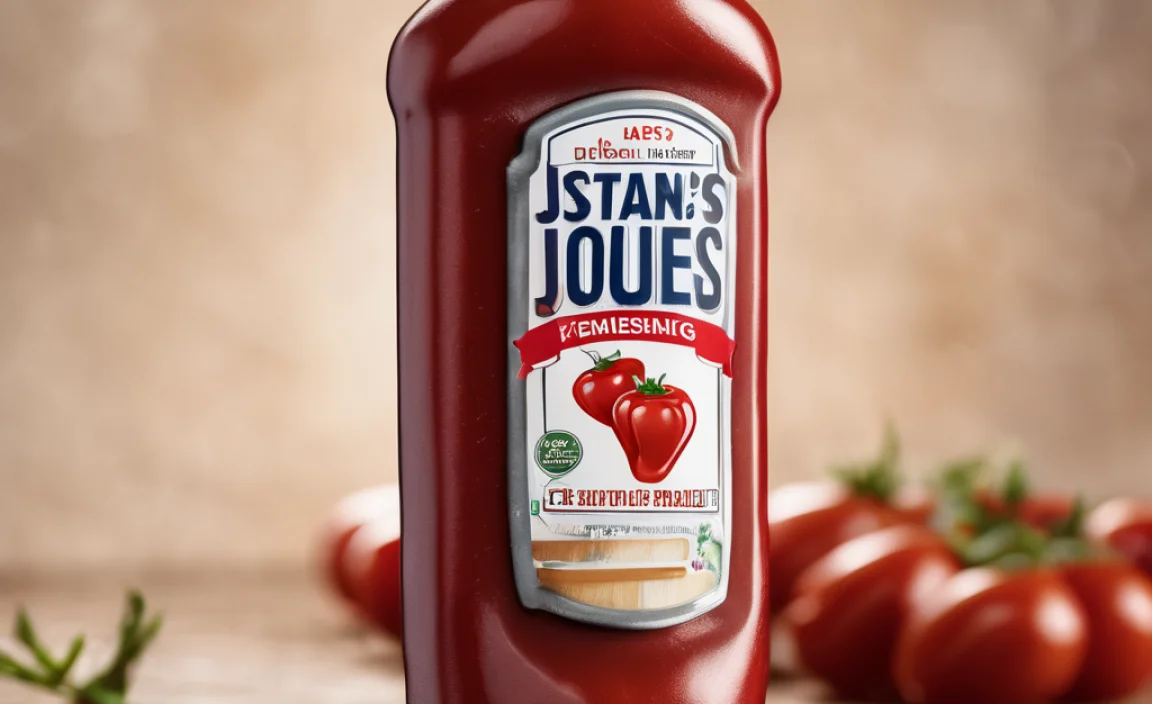
Before you start, gather these common household items. Having them ready will make the stain removal process smoother and more effective.
- Paper towels or a clean white cloth
- A dull knife, spoon, or credit card
- Cold water
- Mild liquid laundry detergent
- Optional: White vinegar, baking soda, or a commercial stain remover
- An old toothbrush (optional, for stubborn spots)
Step-by-Step Guide to Removing Ketchup Stains from Jeans
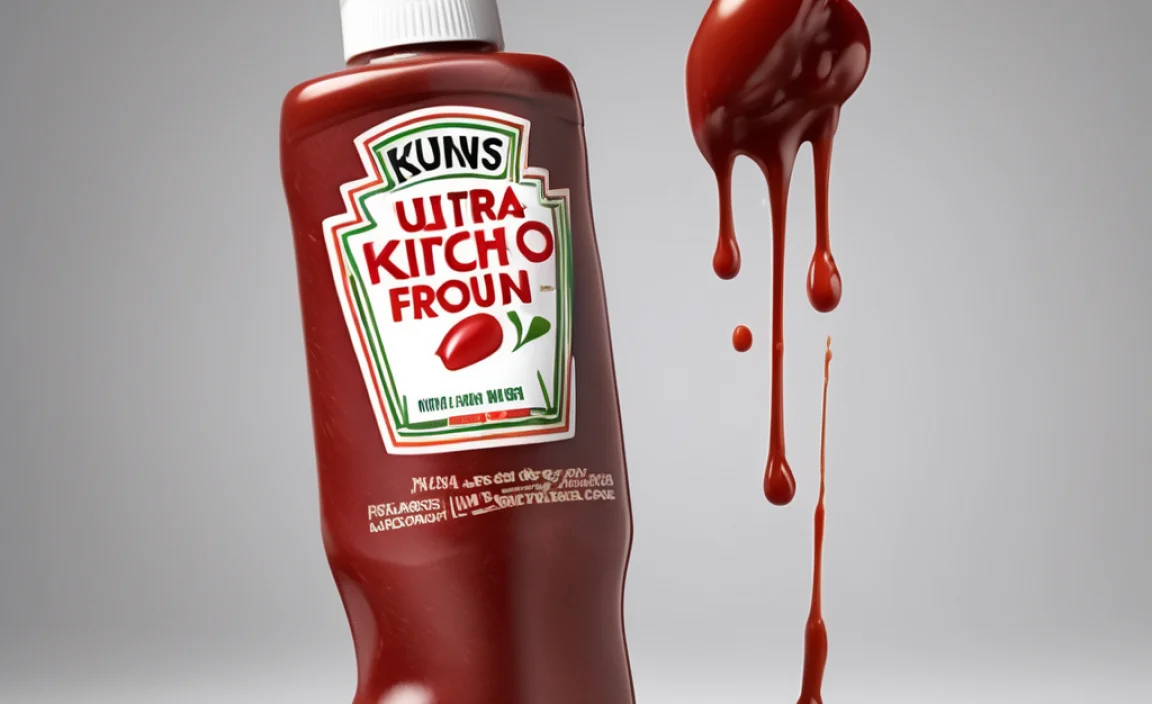
Follow these simple steps to effectively remove ketchup stains. Remember, the quicker you address the stain, the better your chances of complete removal.
Step 1: Act Fast and Scrape Away Excess
The moment you notice a ketchup spill, grab a dull object like a spoon, a butter knife, or even a credit card. Gently scrape off as much of the excess ketchup as possible from the surface of the jeans. Be careful not to rub the stain deeper into the fabric. The goal here is simply to remove the bulk of the sauce.
Why this is important: Removing the excess prevents the stain from spreading further into the denim fibers.
Step 2: Blot with Cold Water
Next, take a clean white cloth or paper towel and dampen it with cold water. Gently blot the stained area. Start from the outside of the stain and work your way inward. Avoid using hot water, as heat can set tomato-based stains. Continue blotting until no more ketchup transfers to the cloth.
Tip: Always use a white cloth to avoid transferring any color from the cloth to your jeans.
Step 3: Pre-Treat the Stain
This is where you’ll tackle the remaining mark. You have a few effective options:
Option A: Mild Liquid Laundry Detergent
Apply a small amount of mild liquid laundry detergent directly to the stained area. Gently work it into the fabric with your fingers or an old toothbrush. Let it sit for about 5-10 minutes.
Option B: Vinegar and Water Solution (for fresh stains)
Mix equal parts white vinegar and cold water. Apply this solution to the stain and let it sit for 5-10 minutes.
Option C: Baking Soda Paste (for slightly older stains)
Make a paste of baking soda and water. Apply it to the stain and let it dry. Once dry, brush off the excess.
Option D: Commercial Stain Remover
If you have a commercial stain remover designed for fabric, follow the product’s instructions. Many are very effective on food-based stains like ketchup.
Important Note: Before applying any new product, it’s always wise to test it on an inconspicuous area of the jeans (like an inside seam) to ensure it doesn’t cause discoloration.
Step 4: Rinse and Check
After the pre-treatment has sat for the recommended time, rinse the treated area thoroughly with cold water. Inspect the area closely. If the stain is still visible, repeat the pre-treatment (Step 3) with the same method or try a different one. Don’t proceed to washing if the stain is still apparent.
Step 5: Wash Your Jeans
Once the stain appears to be gone or significantly faded, it’s time to wash your jeans. Wash them in cold water on a normal cycle, using your regular laundry detergent. You can wash them with other similar colored items.
Step 6: Air Dry and Inspect
After the washing cycle is complete, resist the urge to put your jeans in the dryer immediately. Air dry your jeans, preferably hanging them up. Once dry, inspect the stained area again in good lighting. If the stain has completely disappeared, you’re done! If there’s still a faint mark, do NOT put them in the dryer, as the heat will set the stain permanently. Repeat the pre-treatment and washing steps.
Why air drying is crucial: Heat from a dryer will permanently set any remaining remnants of the stain, making it much harder, if not impossible, to remove later.
Troubleshooting Stubborn Ketchup Stains
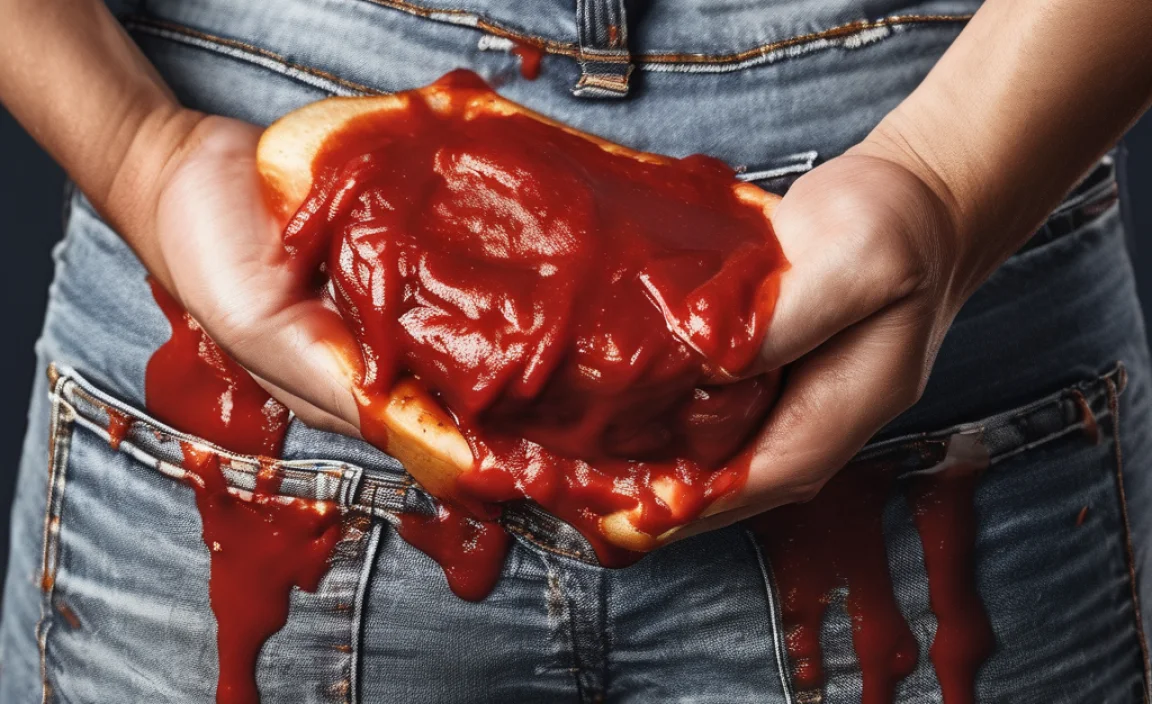
Sometimes, despite your best efforts, a stubborn ketchup stain might linger. Here are a few extra tips:
- Soaking: If the stain persists after a wash, try soaking the jeans in a basin of cold water with some laundry detergent or an oxygen-based bleach (like OxiClean) for a few hours or overnight. Ensure the product is safe for your denim color.
- Repeat Treatments: Don’t be discouraged if it takes multiple treatment cycles. Patience is key with tough stains.
- Enzyme Cleaners: For particularly tough organic stains, consider using a laundry detergent or stain remover that contains enzymes. Enzymes are effective at breaking down protein and organic matter found in foods like ketchup. You can often find these at your local grocery store or online. For instance, the U.S. Environmental Protection Agency highlights the benefits of enzyme-based detergents for effective stain removal and reduced environmental impact.
When to Call the Professionals
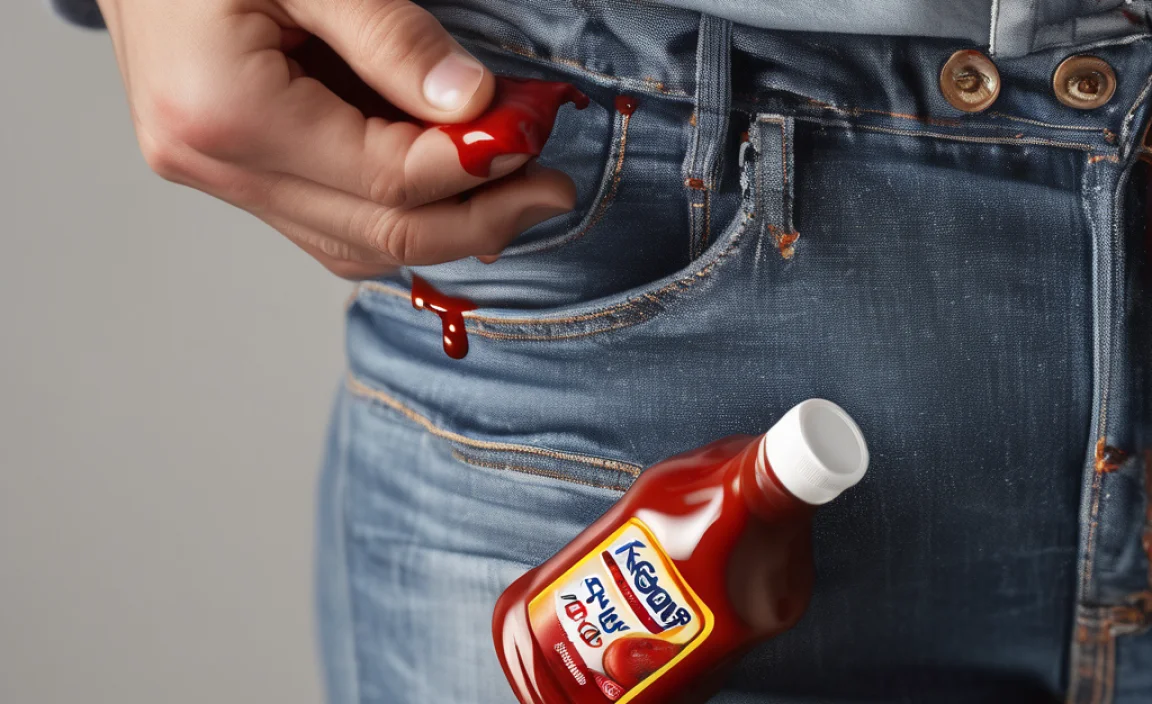
If you have tried multiple methods and the stain stubbornly remains, or if your jeans are made of a delicate material (like raw denim or a blend with delicate fibers), it might be time to take them to a professional dry cleaner. They have specialized solvents and techniques that can often remove stains that home remedies can’t.
Preventing Future Ketchup Stains
While accidents happen, a few proactive measures can help:
- Use a Napkin: Always place a napkin on your lap when eating messy foods like burgers or fries.
- Be Mindful When Dipping: When dipping fries or other items into ketchup, do so over your plate or a napkin, not directly over your jeans.
- Clean Up Immediately: If a spill does occur, address it as soon as possible, even if you’re out and about. A quick blot with a damp cloth (carried in your bag) can make a big difference.
Comparing Stain Removal Methods
Here’s a quick comparison of common methods used for ketchup stain removal on jeans, weighing their pros and cons:
| Method | Pros | Cons |
|---|---|---|
| Mild Detergent Soak | Gentle on fabric, readily available, generally effective on fresh stains. | May require multiple applications for older or set-in stains. |
| White Vinegar Solution | Acidic nature helps break down stains, natural deodorizer, inexpensive. | Vinegar smell can be strong (though it washes out), less effective on very old stains. |
| Baking Soda Paste | Mild abrasive, good for lifting stains, natural and safe. | Can leave a slight residue if not rinsed properly, might require scrubbing. |
| Commercial Stain Removers | Often very effective with specific stain types, can be quick to work. | May contain harsher chemicals, always test first, cost can be higher. |
| Oxygen Bleach Soak | Powerful stain remover, effective on many organic stains, color-safe variants available. | Requires soaking time, always check garment care label for compatibility. |
Frequently Asked Questions About Ketchup Stains on Jeans
Q1: Will hot water remove ketchup stains?
No, hot water can actually set tomato-based stains like ketchup into the fabric, making them harder to remove. Always use cold water for treating and washing ketchup stains.
Q2: Can I use bleach on ketchup stains on my jeans?
For white jeans, chlorine bleach might be an option, but it can weaken denim fibers and cause yellowing over time. For colored or dark jeans, never use chlorine bleach as it will cause significant discoloration. Oxygen-based bleaches are a safer alternative for most denim colors and can be effective.
Q3: How long can I wait before treating a ketchup stain?
The sooner, the better! Fresh stains are significantly easier to remove than old, dried-in ones. If you can’t treat it immediately, at least scrape off the excess and blot with water if possible, and then treat it as soon as you can.
Q4: My jeans are dry clean only. Can I still remove ketchup stains?
If your jeans have a “dry clean only” label, it’s best to take them to a professional cleaner. Attempting home stain removal might damage the fabric or the care label’s instructions. Inform the cleaner about the ketchup stain.
Q5: What if the stain is old and dried?
For old, dried ketchup stains, you’ll likely need to be more persistent. Start by gently scraping off any dried residue. Then, a prolonged soak in cold water with a strong detergent or an enzyme-based cleaner (as mentioned in the troubleshooting section) is often the most effective approach. You may need to repeat the treatment and washing process several times.
Q6: Does the type of denim matter?
Generally, standard cotton denim is quite resilient. However, if your jeans are made from a blend with delicate fibers (like silk or rayon) or are raw denim, be extra cautious. Always test any stain removal product on an inconspicuous area first, and consider consulting a professional if you’re unsure.
Conclusion
Accidental spills happen, but a ketchup stain on your favorite jeans doesn’t signal the end of their life. By acting swiftly, employing basic household items, and following a methodical approach, you can effectively lift and remove ketchup stains, restoring your denim to its former glory. Remember the key principles: scrape, blot with cold water, pre-treat, wash cold, and air dry to inspect. With a little care and attention, your jeans will be looking stain-free and ready for your next outing. Don’t let a small spill cause big frustration; you’ve got this!


